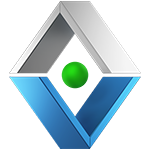In large studios you will have animators AND riggers, or Character Technical Directors. They are very similar in they are both needed to create moving animations that bring objects to life. Riggers build the complex system that is best described as the skeleton of animations. It’s an extremely technical job that often requires the creation of custom controls, muscle systems, joints and more in order to give the animators what they will need to make the character move, act, and show emotion. But when it comes to smaller studios the more of your animators who know how to rig the better. It will increase productivity and will help them understand the process from both directions.
Communication is key in any office but when it comes to an animation studio it’s vital. You are creating movies, commercials, shorts, games, and assets and it’s a team effort. Having a skilled team of animators who have knowledge, no matter how basic, can help them feel more comfortable talking with the rigger about features or problems they are having with the rig itself. This can be very important because again, the Character TD is the one who is creating the controls the animator is going to use to make the object move. Alternatively, the Character TD should have knowledge of character animation and what they would want within a particular rig. How can they create the most intuitive setup possible for the animator? Having a knowledge of simple squash and stretch controls, riggers will be able to know the importance of the head and stomach areas. Nether one needs to be a master of the other but basic knowledge and understanding is important.
In a small office having a talented staff that will be able to create and edit what they need on the spot is huge. During production, time is your enemy. Any task that’s in the pipeline is given a timeline and rated for its importance. Small issues that slow down that pipeline may cause a project to miss a deadline. Animators can often find themselves with a rig not capable of a shot they need or a facial rig that can’t be perfectly posed with the given facial controls. This would mean the animator would have to go back to the Character TD and have them change or recreate a new rig. In most cases the changes are not major and with basic knowledge of rigging principles the animator would be able to make the changes without sending it back to the rigger, thus, speeding up production time.
When it comes to animation it’s important to have a quality team you can trust. A team that understands timelines, pipelines and of course rigging lines. (Sorry, had to). Having both riggers and animators does have it’s up side but at the end of the day having team members who can do both can be a project saver.

One reply on “Rigging and Animation: The Meat and Potatoes of Small Studios”
very nice meat